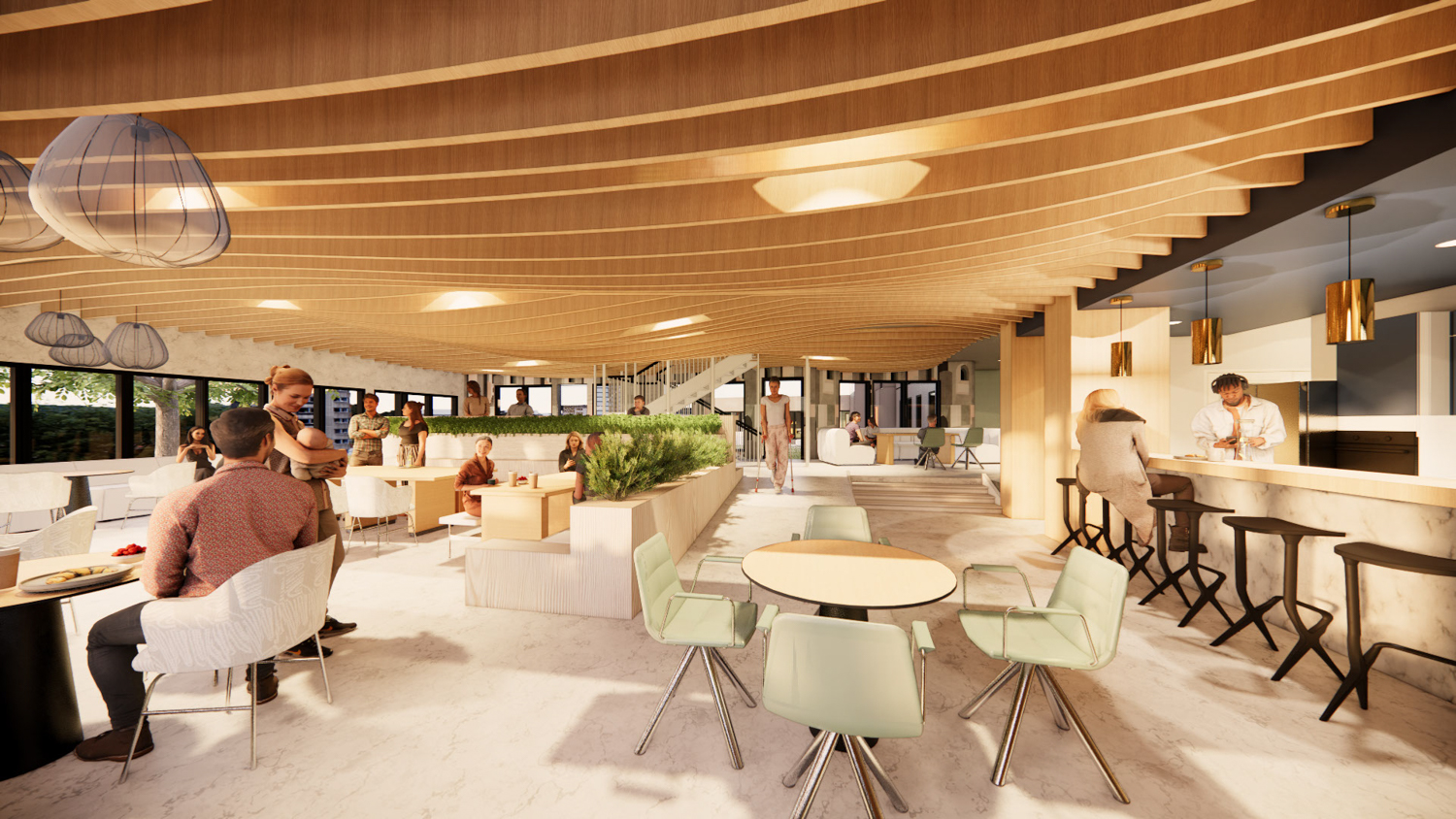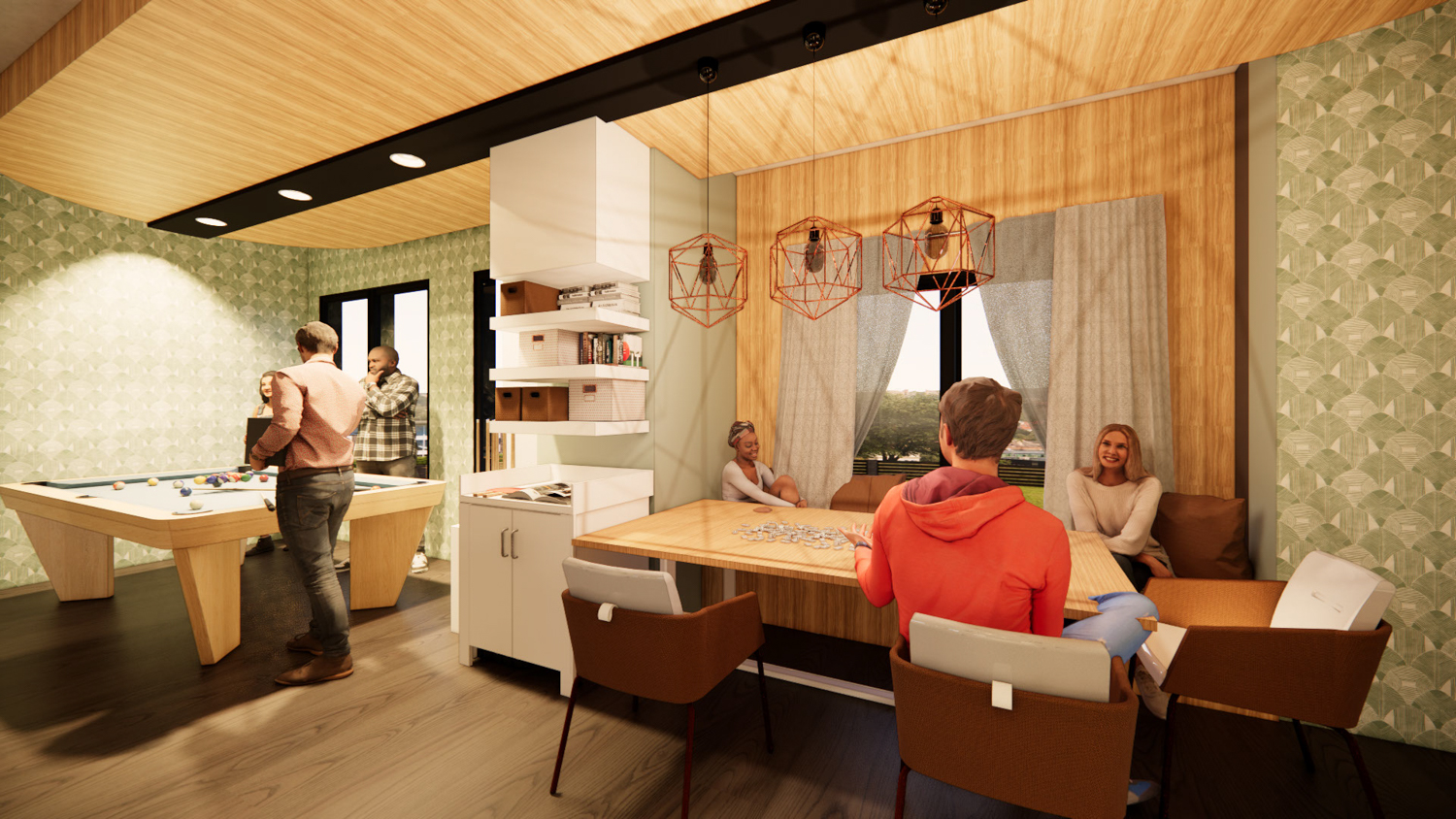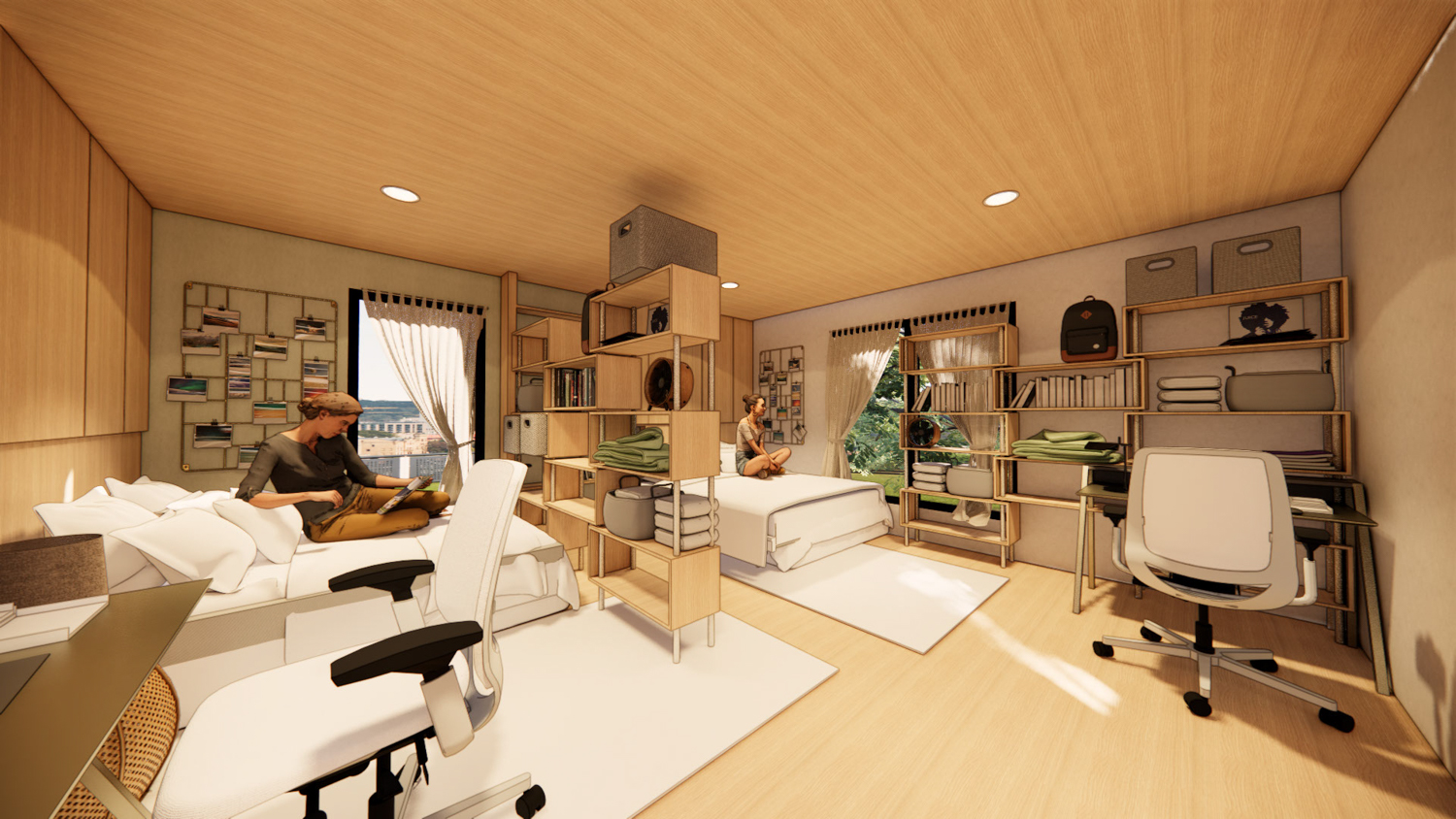Artist Statement
Victoria is a fifth-year interior design/architecture student after receiving her BFA in interior design and a double minor in psychology and business administration in May 2022 from Endicott and as well as her MA in interior architecture in August 2023. For the last 3 years, Vicky has worked as a Senior Certified Pharmacy Technician where she is able to grow her knowledge of the healthcare field to fuel her passion for healthcare design. Vicky grew up being taught to choose compassion and empathy first always, which has inspired her to become an interior designer to design spaces for the greater good and create spaces that can be used to stimulate both physical and mental health through biophilic and sustainable approaches while also using environmental psychology to steer the occupants towards a specific emotion.
Though there aren’t enough words in the world to string together a big enough thank you for her incredible support system, Vicky would like to extend a massive thank you anyway to her parents, her sisters Tina and Sophia, her nephews Milo and Hayden–who is still on the way but just as important–, as well as her Walgreens family; Suki, Marina, Krystal, Dominique, Sarah, Soraya, Sean and Christine for all their endless love and support through these tumultuous and challenging last few years. Last but certainly not least, her biggest thank you goes out to her dog, Bono who is her entire heart and soul and arguably the greatest love she will ever know. Without all of them, truly none of this would have been possible.
Thesis Statement
The opioid epidemic has devastated the lives of people internationally for several years. Thousands of people in Massachusetts alone have been affected by the opioid epidemic in some capacity, whether first-hand as a user or second-hand as a relative of an addict. Even though it is a problem that is not overlooked, efforts have generally been ineffective in combating it. The concept of a “healing environment” has been adapted in this study as a framework to establish substance use disorder rehabilitation centers that support physical and psychological health, healing, and well-being among young adults. There is no one-size-fits-all treatment; some techniques work for some and not for others. Providing individualized care to patients in a single location has the potential to combat the opioid epidemic and decrease relapse and overdose rates by successfully promoting healthy and independent habits and lifestyles once in recovery and most importantly, giving addicts the access to healthcare that they desperately want and deserve, but cannot currently receive. This project created a multidisciplinary treatment center informed by studies that proved how nature, color theory, communal support, and the establishment of independence and healthy habits are all crucial factors to a successful recovery in substance abuse treatment. As part of rehabilitation reform, design can assist in destigmatizing and deinstitutionalizing substance abuse disorders and addictions, especially among young adults (18-34) – while also preparing those who have become sober for a healthy, independent life outside the rehabilitation center by providing the space for education and access to mental healthcare. Environmental enrichment through biophilia, color theory, and creating a sense of community are all crucial components to a successful recovery. Still, many facilities today, unfortunately, do not have the resources–both economically and space-wise—to implement these aspects.









